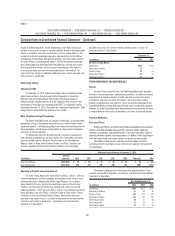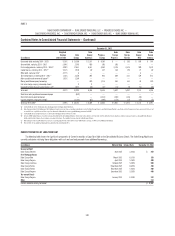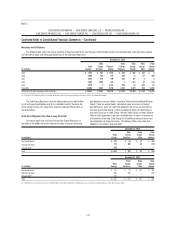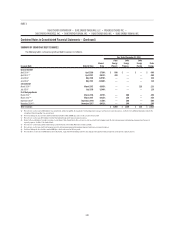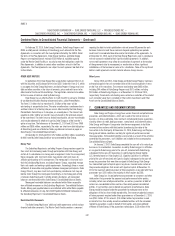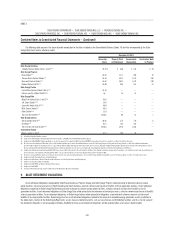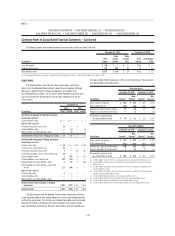Duke Energy 2014 Annual Report Download - page 163
Download and view the complete annual report
Please find page 163 of the 2014 Duke Energy annual report below. You can navigate through the pages in the report by either clicking on the pages listed below, or by using the keyword search tool below to find specific information within the annual report.
143
PART II
DUKE ENERGY CORPORATION • DUKE ENERGY CAROLINAS, LLC • PROGRESS ENERGY, INC. •
DUKE ENERGY PROGRESS, INC. • DUKE ENERGY FLORIDA, INC. • DUKE ENERGY OHIO, INC. • DUKE ENERGY INDIANA, INC.
Combined Notes to Consolidated Financial Statements – (Continued)
guarantees expire between 2015 and 2033, with the remaining performance
guarantees having no contractual expiration.
Duke Energy has guaranteed certain issuers of surety bonds, obligating
itself to make payment upon the failure of a wholly owned and former non-
wholly owned entity to honor its obligations to a third party. Under these
arrangements, Duke Energy has payment obligations that are triggered by a
draw by the third party or customer due to the failure of the wholly owned
or former non-wholly owned entity to perform according to the terms of its
underlying contract. At December 31, 2014, Duke Energy had guaranteed
$44 million of outstanding surety bonds, most of which have no set expiration.
Duke Energy uses bank-issued stand-by letters of credit to secure the
performance of wholly owned and non-wholly owned entities to a third party or
customer. Under these arrangements, Duke Energy has payment obligations to
the issuing bank which are triggered by a draw by the third party or customer
due to the failure of the wholly owned or non-wholly owned entity to perform
according to the terms of its underlying contract. At December 31, 2014, Duke
Energy had issued a total of $452 million in letters of credit, which expire
between 2015 and 2020. The unused amount under these letters of credit was
$46 million.
Duke Energy and Progress Energy have issued indemnifi cations
for certain asset performance, legal, tax and environmental matters to
third parties, including indemnifi cations made in connection with sales of
businesses. At December 31, 2014, the estimated maximum exposure for these
indemnifi cations was $107 million, the majority of which expires in 2017. Of this
amount, $7 million has no contractual expiration. For certain matters for which
Progress Energy receives timely notice, indemnity obligations may extend beyond
the notice period. Certain indemnifi cations related to discontinued operations
have no limitations as to time or maximum potential future payments.
The following table includes the liabilities recognized for the guarantees
discussed above. These amounts are primarily recorded in Other within Deferred
Credits and other Liabilities on the Consolidated Balance Sheets. As current
estimates change, additional losses related to guarantees and indemnifi cations
to third parties, which could be material, may be recorded by the Duke Energy
Registrants in the future.
December 31,
2014 2013
Duke Energy $28 $24
Progress Energy 13 9
Duke Energy Florida 73
8. JOINT OWNERSHIP OF GENERATING
AND TRANSMISSION FACILITIES
The Duke Energy Registrants hold ownership interests in certain jointly
owned generating and transmission facilities. The Duke Energy Registrants
are entitled to shares of the generating capacity and output of each unit equal
to their respective ownership interests, except as outlined below. The Duke
Energy Registrants pay their ownership share of additional construction costs,
fuel inventory purchases and operating expenses, except in certain instances
where agreements have been executed to limit certain joint owners’ maximum
exposure to the additional costs. The Duke Energy Registrants share of revenues
and operating costs of the jointly owned generating facilities is included within
the corresponding line in the Consolidated Statements of Operations. Each
participant in the jointly owned facilities must provide its own fi nancing, except
in certain instances where agreements have been executed to limit certain joint
owners’ maximum exposure to the additional costs.





